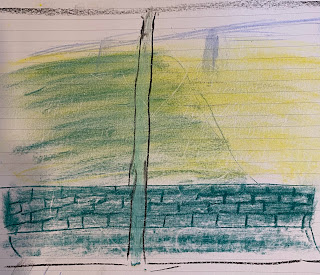Our two weeks of intensive summer work have ended. It is early to talk about results but I can reflect on what I have learned. In the past two weeks, I have been fully immersed with our participants, occasionally I led discussions and activities the rest of the time I split between being a catalyst for discussions sparking directions and ideas, and participating. I was a learner, artist, and curriculum designer. I reflected on my teaching and made plans to do better.

I will try to name a few specific lessons:
1. Movement in magic- Sir Ken Robinson said in his famous Ted Talk Do Schools kill creativity? that education thinks only from the shoulders up. I agreed with his argument but as a university head-first person assumed that it was only marginally true for me. I agreed with his example that some people are dancers and should have the opportunity to move and express themselves. What I missed was that we are all dancers moving through the world (some like me more goofily), and that we can all benefit from movement (thank you Maggie).
 2. Trust is everything- This is something I often discuss in my teaching but this time I felt the impact of trust (and the breaking of trust) on me and the teachers around me. With trust, our fight or flight instincts do not emerge immediately when confronting something difficult and uncomfortable. I can say more but I would like to wait for our research to shed some light.
2. Trust is everything- This is something I often discuss in my teaching but this time I felt the impact of trust (and the breaking of trust) on me and the teachers around me. With trust, our fight or flight instincts do not emerge immediately when confronting something difficult and uncomfortable. I can say more but I would like to wait for our research to shed some light.3. Playfulness is learning- During the two weeks, I created art in what can only be described as playful ways. I used different materials approaches and media to mixed results. I failed spectacularly and shared my failures with as many people as possible. Yes, I aimed to model learning behavior but mostly through "forgetting" and letting myself just be in the creative moment. As a result, I learned a lot (still processing) and got a lot braver about sharing my work and sharing myself.
4. Emerging Media arts emerged- I have been worried that we did not infuse enough emerging media arts into the work. We decided to wait on digital tools and just occasionally included tools to bring forward the work into the realm of emerging media arts. Despite this "low infusion" approach the final projects and reflections included many products that included emerging media arts. Moreover, now the teachers are ready for a bigger taste of emerging media and eager to integrate.
In the coming months, I will add some more but this is where I am now, exhausted, satisfied, and eager to continue!



























